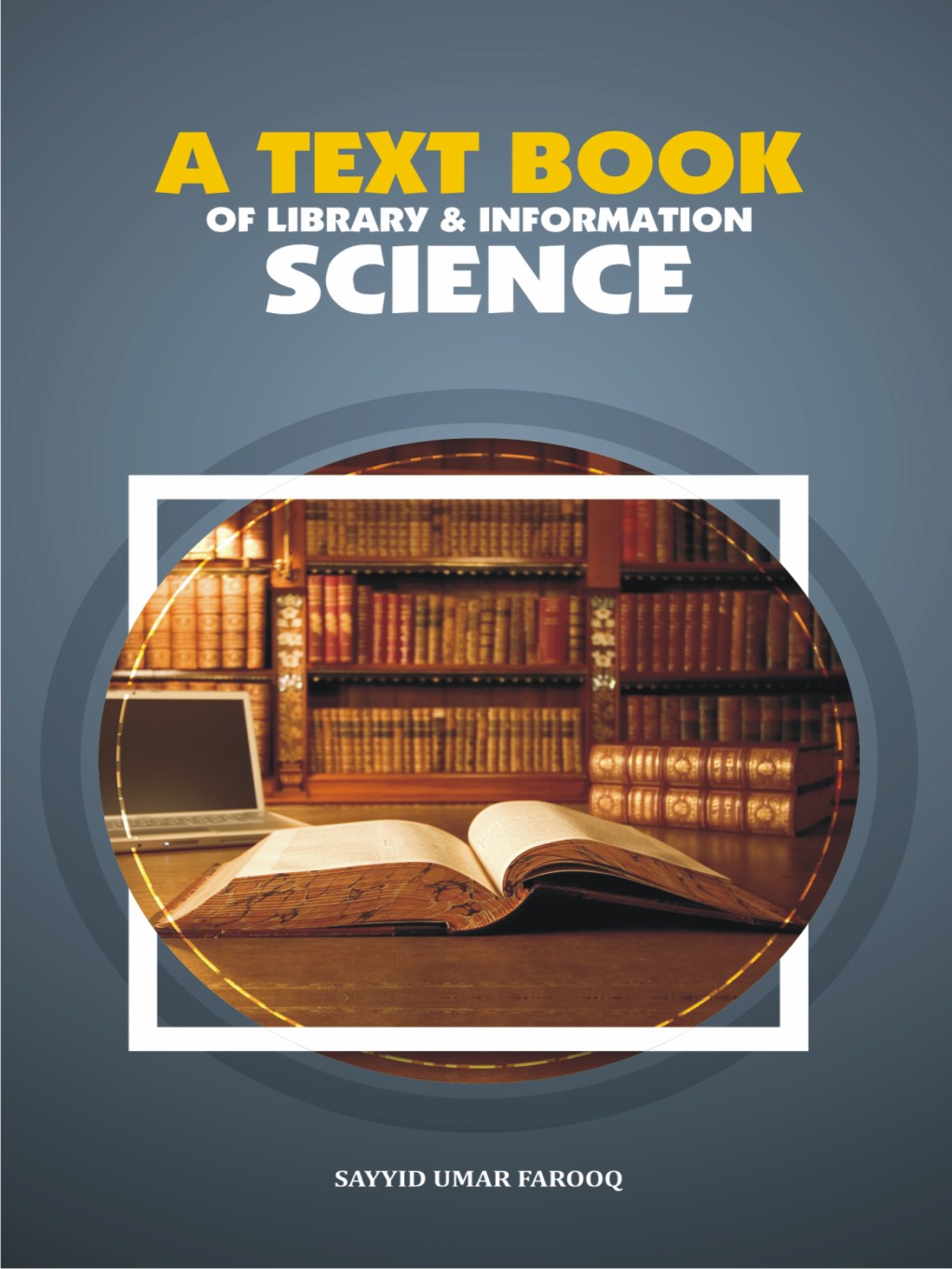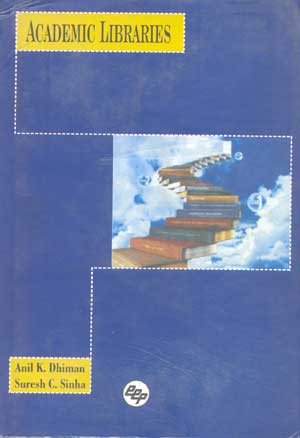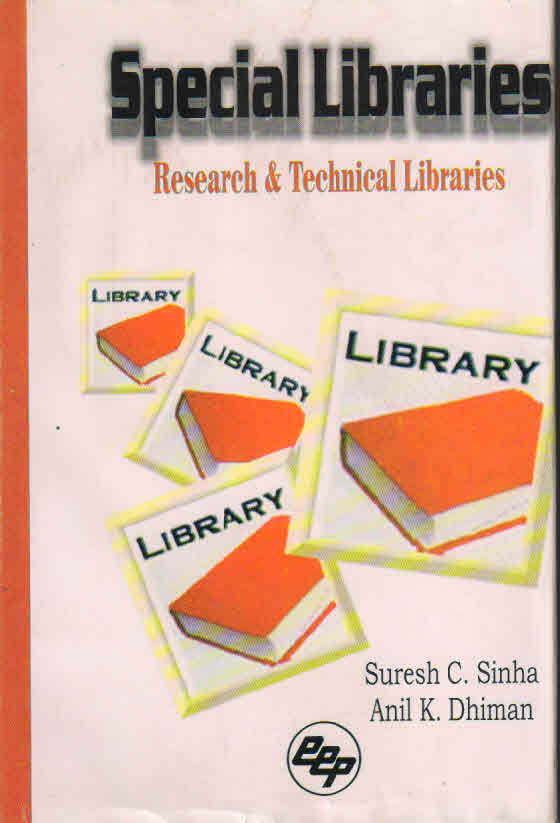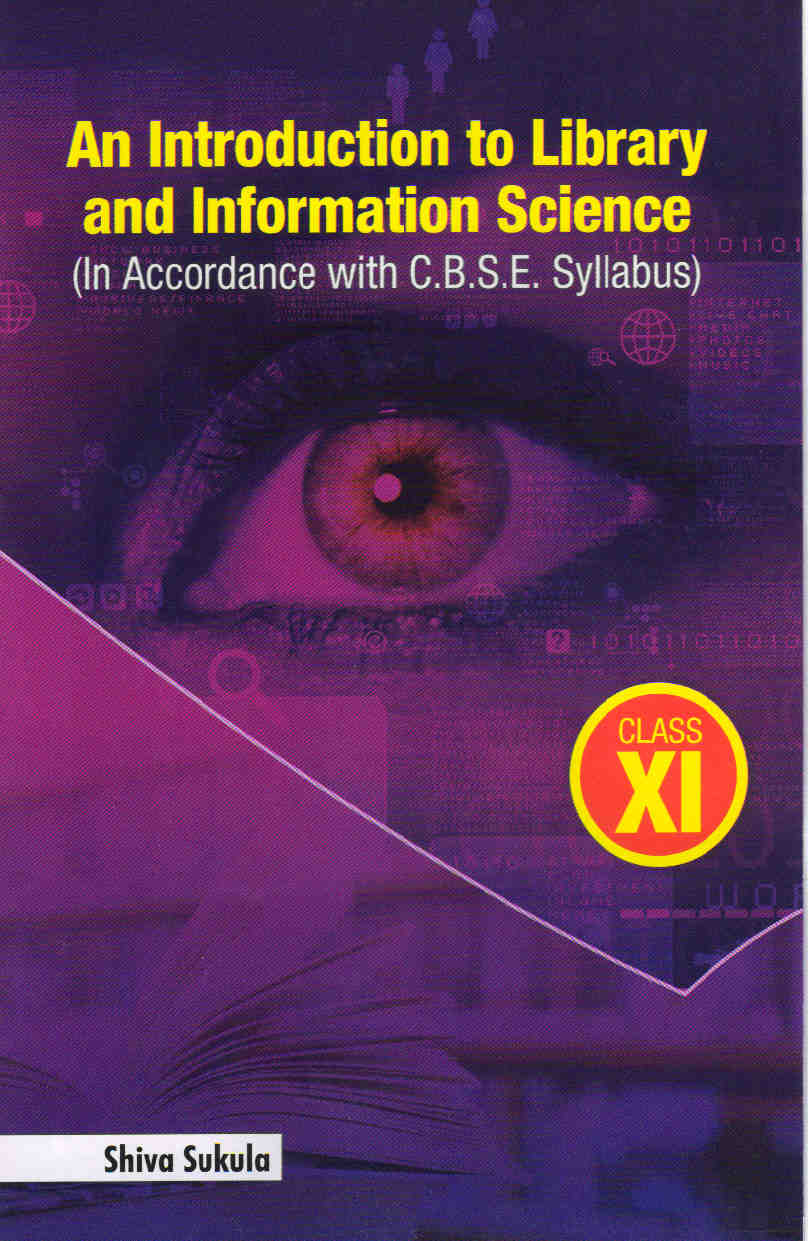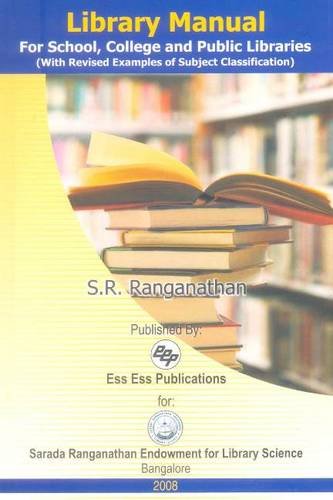A TEXTBOOK OF LIBRARY AND INFORMATION SCIENCE
Rs. 725
Additional information
| ISBN | 9789387698352 |
|---|---|
| Year of Publication | 2020 |
| Binding | HardBound |
| Pages | 167 |
| Edition | |
| Language | English |
This book is descriptive in nature and covers the latest syllabus of almost all universities and institutions departing Library & information science education in India.
Preface
UNIT-I : HISTORY
1 History of Libraries in the Ancient World
1. Libraries in the Ancient World
1.1 Sumerian Libraries
1.2 Islamic Knowledge Libraries
1.3 Greece and Roman Libraries
1.4 Great Library of Alexandria
2. Libraries in Ancient Asia
3. Libraries in European Middle Ages
2 History of Academic Libraries in Ancient India
1. Taxila University Library
2. Nalanda University Library (1200 A.C.E)
3. Valabhi University Library (600-1200 C.E.)
3 Development of Libraries in India
1. Ancient India
2. Medieval India
3. Modern India
3.1. Before Independence
3.2. After Independence
4 Development of Libraries in United Kingdom
1. Kinds of libraries in United Kingdom
1.1. Monastic Libraries
1.2. Subscription and Circulation Libraries
1.3. Private Subscription Libraries
1.4. Commercial Circulating Libraries
1.5. Mechanic Institute Libraries
2. Library Legislation in United Kingdom
2.1. The 1850 Act
5 Development of Academic Libraries in India
1. Before Independence
1.1. Hunter Commission/ Indian
Education Commission (1882)
1.2. Raleigh Commission (1902)
1.3. Sadler Commission/ Calcutta
University Commission (1917)
2. After Independence
2.1. Radha-Krishnan Commission/
University Education Commission
(1948-49)
6 Development of Public Libraries in India
1. After Independence
1.1. Sinha Committee/Library Advisory
Committee (1958)
1.2. Establishment of RRRLF
7 Library Legislation
1. Factors responsible for the enactment of
library legislation in India
2. Advantages of Library Legislation
3. Public Library Bill
4. Public Library Acts
4.1. Madras/Tamil Nadu Public
Library Act (1948)
4.1.1. Salient Features
4.2. Hyderabad/ Andhra Pradesh Public
Library Act (1960)
4.2.1. Salient Features
UNIT-II : FUNDAMENTALS
8 Basics About Libraries
1. Definition of Library
2. Objectives and Purpose of Libraries
3. Functions of Libraries
4. Types of Libraries
4.1. Academic Library
4.1.1. School Library
4.1.2. College Library
4.1.3. University Library
4.2. Public Library
4.3. Special Library
4.4. National Library
9 Importance of Libraries
1. Role of Libraries in Society
2. Role of Libraries in Formal Education
2.1. Role in Education
2.2. Role in Research and Development
2.3. Role in Information Dissemination
3. Role of Library in Non-Formal Education
4. Role of Library in the Informal Education
4.1. Role in the preservation of Culture
4.2. Role in Leisure and Recreation
4.3. Role in Moral, Ideological and
Spiritual Development
10 Five Laws of Library & Information Science
1. Objectives of Five Laws
2. Explanation of Five Laws of Library Science
1. First Law- Books are for Use
2. Second Law- Every reader his/her Book
3. Third Law- Every Book its reader
4. Fourth Law- Save the time of the reader
5. Fifth Law- A library is a growing organism
3. Implications of Five Laws of Library Science
Implication of the First Law
Implication of the Second Law
Implication of the Third Law
Implication of the Fourth Law
Fifth Law
11 Basics About Subjects
1. Definition of subject
2. Types of subjects
3. Modes of Subject Formation
1. Loose Assemblage
2. Lamination
3. Fission
4. Fusion
5. Distillation
6. Agglomeration
7. Cluster
UNIT-III : INFORMATION SOURCES AND SERVICES
12 Information Sources
1. Introduction
1.1. Documentary information sources
1.1.1. Primary
1.1.2. Secondary
1.1.3. Tertiary
2.1.Non-Documentary information sources
2.1.1. Human
2.1.2. Institution
2.1.3. Mass Media
2.2.Electronic information sources
13 Evaluation
1. Evaluation of Reference sources
2. Vocabulary Control & Thesaurus
14 Information Services
1. Reference Information Service
1.1. Short Range Reference Service
1.2. Long Range Reference Service
1.3. Current Awareness Service
1.4. Selective Dissemination of
Information
1.5. Inter-library loan service
2. Supportive Information Services
2.1. Translation service
2.2. Document Delivery Service
2.3. Reference Interview
15 User Education
1. Need of User Education
2. Objectives of User Education
3. Methods of User Education
UNIT-IV : INFORMATION TECHNOLOGY,
LIBRARY AUTOMATION & NETWORKING
16 Generations of Computer
1. Characteristics of Generations
1.1. First Generation
1.2. Second Generation
1.3. Third Generation
1.4. Fourth Generation
1.5. Fifth Generation
17 Types of Computer
1. Super-computer
2. Mainframe
3. Mini-computer
4. Micro-computer
18 Types of Computer Network
2. Characteristics of Network
2.1. Based on Topology/ Physical
connectivity
2.1.1. BUS Topology
2.1.2. STAR Topology
2.1.3. RING Topology
2.1.4. Mesh Topology
2.1.5. TREE Topology
2.2. Based on Geographical area/size
2.2.1. PAN
2.2.2. CAN
2.2.3. LAN
2.3. Based on structure/ functional
relationship
2.3.1. Client-Server Network
2.3.2. Peer To Peer Network
19 Operating System (OS)
1. Introduction
2. Types of Operating System
2.1. Command based O.S.
2.2. Graphics based O.S.
20 Integrated Library Management Software
1. NewGenLib
1.1. Features
1.2. Conclusion
Questions for Practice
Appendix


